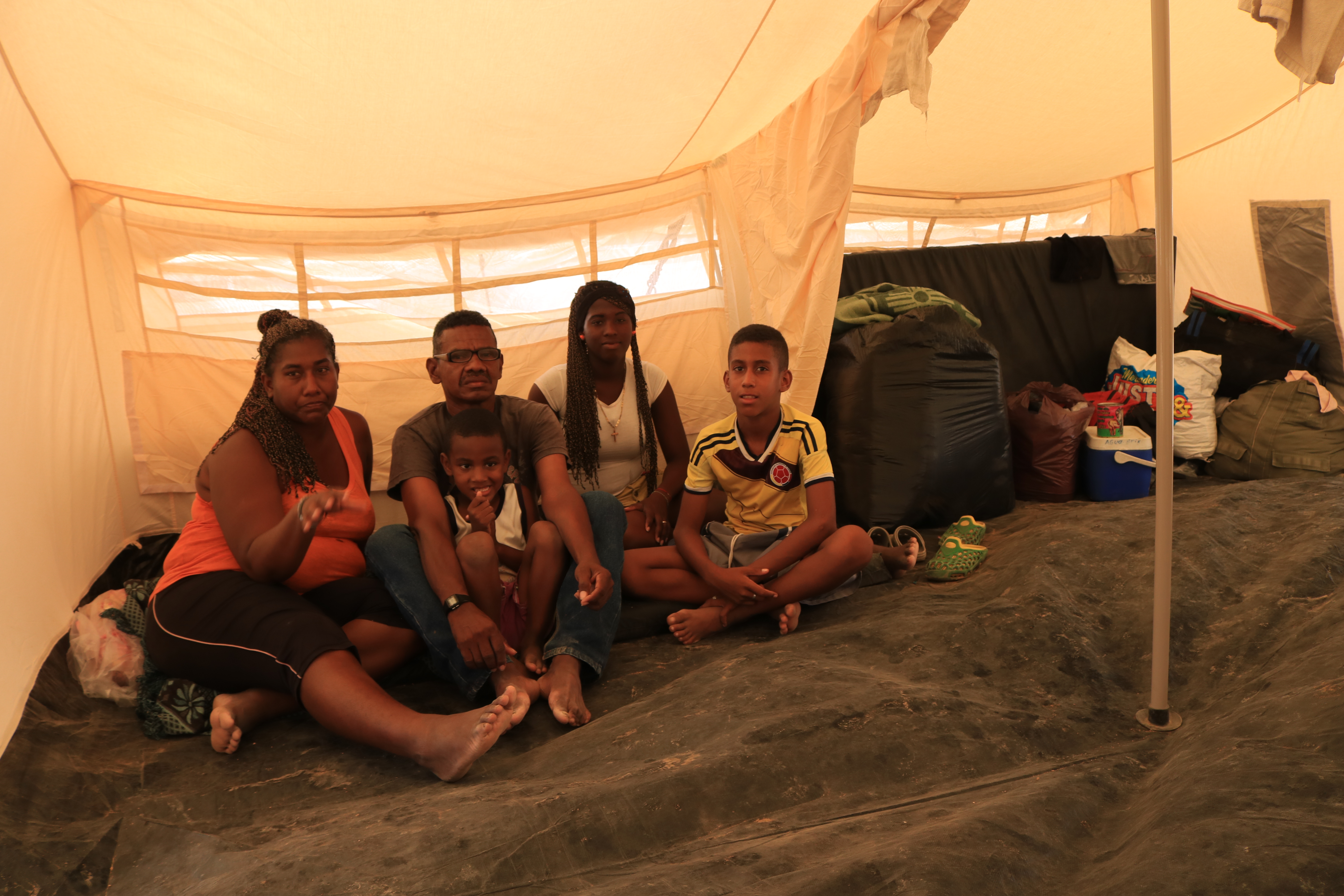At the Sandy Limbo of Maicao
60 tents from the UN refugee agency now shelter hundreds of Venezuelan migrants on ten acres of scorched and sandy desert outside the Colombian city of Maicao. In the coming months, this encampment will quadruple in size.


Photos: Dylan Baddour
This isn’t a refugee camp, but a center for temporary attention, built to tend to thousands of destitute Venezuelans who were already sleeping on the streets of this sun-baked city near the Venezuelan border, get them on their feet and send them on their way. That’s what the authorities say.
The rows of UN tents flapping in the desert wind suggest otherwise, an ominous image for the future of these migrants.
“It should be a last resort to have a center like this,” said Jozef Merkx, head of the UNHCR in Colombia. “We agreed with the government there was no other option.”
Venezuelans have been flocking over the Colombian border for years, searching for food, medicine and a livelihood that can’t be found at home, fueling a mounting humanitarian crisis, with scores of hungry Venezuelans sleeping in public streets, flooding local schools and hospitals.
Colombia estimates that 5,000 Venezuelans cross its border each day to migrate to or through the nation, on to Ecuador, Peru and beyond, often thousands of kilometers on foot. According to Merkx, 3.4 million Venezuelans have fled the crisis at home, and about 1.3 million have settled in Colombia. If the migration rate continues, those numbers could hit 5 million and 2 million by the end of the year.
 “It should be a last resort to have a center like this,” said Jozef Merkx, head of the UNHCR in Colombia. “We agreed with the government there was no other option.”
“It should be a last resort to have a center like this,” said Jozef Merkx, head of the UNHCR in Colombia. “We agreed with the government there was no other option.”
Colombian officials had long committed to not building camps, fearing it could draw even more migrants, and leave this country responsible for housing and feeding a population indefinitely. But by the start of 2019, the authorities of Maicao concluded they had no other choice.
The population of Maicao, a place where Venezuelans used to go for cheap goods when the going was great (Cuarta República times) has run through ten years of projected population growth in seven months. Since May 2018, the number of Venezuelans quadrupled to 70,000, thousands of people sleeping in public squares, turning some sections of streets into squalid bathrooms. You’ll also see children with skin infections related to life on the street and communicable diseases.
“The situation in Maicao was so dramatic that we had to put up this center,” said Felipe Muñoz, Colombia’s manager of the border zone. “The big challenge now is how to get these families to something more stable, because the idea isn’t that they stay there.”
Colombia has been wary of spending on humanitarian aid for Venezuelans, opting instead to funnel its budget towards long-term measures aimed at helping almost two million Venezuelans integrate into the Colombian economy. That means Colombia has shied away from soup kitchens and shelters, prioritizing initiatives to document new arrivals and provide work opportunities.
“What can we do?” said Aldemiro Santo Choles, secretary of the government of Maicao. “We would like to tell (Venezuelans), ‘Hey, you all get together and fix this problem you have, because it has become our problem, and we can’t create the solution here.’”
“I really hope they don’t try to solve this with violence,” said Orlando Arbelo, a 50-year-old construction worker from Miranda, Venezuela, as he sat with his wife and four children, sheltered from the desert sun in his UN tent. “My grandparents lived the civil war in Colombia. A civil war is very easy to start but very hard to end.”
Orlando’s family spent almost a year in Maicao, working odd jobs and drifting from one home to another. They’ve just been admitted to the UN center and hope to use their time there to save money for rent.
21-year-old Liliana Mendez, however, is just approaching the end of her six-week stay. She came to Colombia almost three months ago, with hope of earning money for her mother and two children at home. Instead, she found herself sleeping on the street, barely scraping by.
“At least here you can eat,” she said, “that’s impossible in Venezuela. One moves with hope to find work and send money home, but there are no gigs for us.”
She’s grateful for the shelter and food she was given by the UN refugee agency. But when her time at the shelter expires, it’s the sandy streets of Maicao again.
Caracas Chronicles is 100% reader-supported.
We’ve been able to hang on for 22 years in one of the craziest media landscapes in the world. We’ve seen different media outlets in Venezuela (and abroad) closing shop, something we’re looking to avoid at all costs. Your collaboration goes a long way in helping us weather the storm.
Donate




